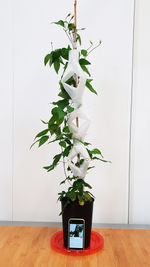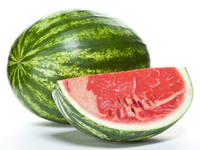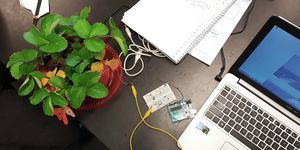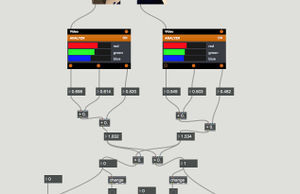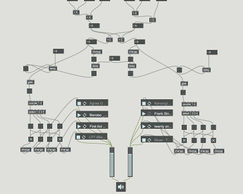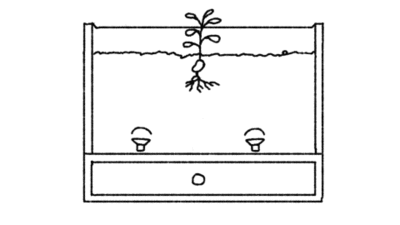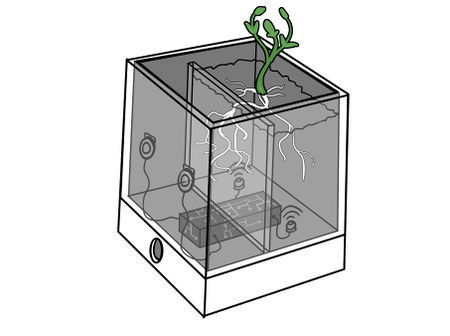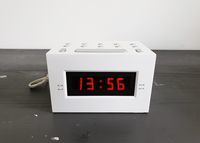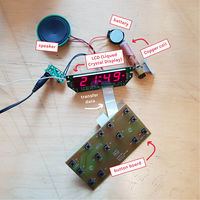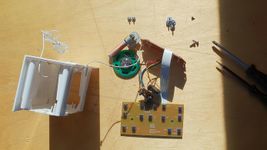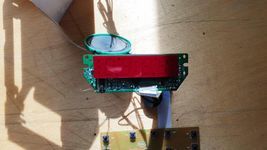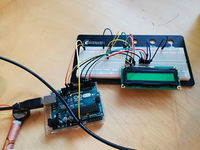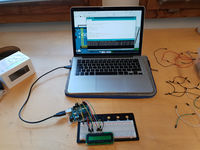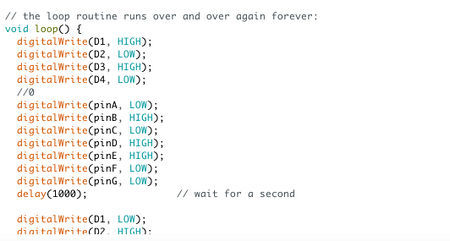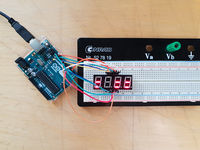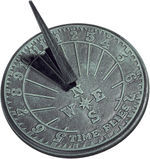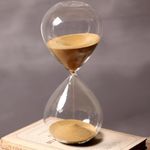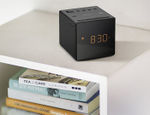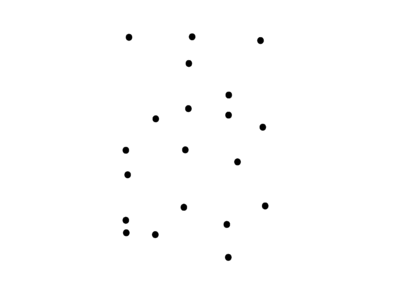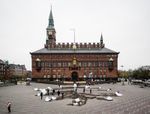Difference between revisions of "User:Lot"
| Line 198: | Line 198: | ||
| − | [[File:wekker5.jpg | | + | [[File:wekker5.jpg | 267px]] [[File:wekker4.jpg | 267px]] [[File:oud1.jpg | 200px]] [[File:oud2.jpg | 200px]] |
| − | |||
| − | [[File:oud1.jpg | 200px]] [[File:oud2.jpg | 200px]] | ||
| Line 216: | Line 214: | ||
| − | [[File:figure.jpg | | + | [[File:figure.jpg | 200px]] |
| Line 224: | Line 222: | ||
| − | [[File:code.jpg | | + | [[File:code.jpg | 450px]] |
Revision as of 18:30, 5 November 2018
Lot Mars
Graphic Design
0909132
Contents
PROJECT 1
Our team consists of:
• Annemarie (animation)
• Dieke (animation)
• Koen (animation)
• Karlijn (graphic design)
• Lot (graphic design)
process
07 / 09 We started this day playing with the cards to see what kind of combinations we could make. After a while we settled with the idea of making an object designed for a tree. What if a tree could use a social network? We went for the following combination: "Make an object designed for a tree to use 'Social Networking'. Use folded paper to create a physical model of this new thing." What if a tree could use a social network? What are the things a tree can do? If the branches move it is the wind which do the work, not the tree itself. So maybe the only movement a tree creates, is growing.
We decided to keep it to just 'Yes' and 'No' decisions to keep it simple. This is how we arrived at Tinder, because not only is the idea of a tree on Tinder pretty funny, but it's also simple to use. You merely need to swipe to the left or the right whether you want to date a certain person or not. Maybe we could let the tree decide by letting it grow to either the left or the right...
For this prototype, we decided to use a smaller plant instead of a tree, because it's much easier for a smaller plant to grow and to build an object for it. Our plan is to let the plant grow in a tube-like structure and let it decide to grow further in either the left tube or the right tube. In both tubes, there is a sensor that detects whether it should swipe either left or right respectively. As of now we haven't figured out how to make the object swipe just yet. Today we made a prototype of the tube system out of paper, with one of the tube ways already being taken by the plant just to show what it would look like. We also made a Facebook and Tinder account for our plant: Clovis Clematis.
end result
13 / 09 Presentation day
For today we had to present Clovis and her cyborg appendage to the rest of the class. The reception was pretty okay. The main question that was brought up was 'How can a plant know that it is using Tinder?' Obviously it doesn't, but maybe we can convert the Tinder profile picture into sound and give the plant a choice instead of letting it grow by chance.In two weeks we need to have a prototype that works as much as possible. It doesn't have to be a continuation of project 1, but it does need:
• To be somewhat related to these explorations on reimagining technology.
• To be 3D, a real thing.
• To be simulating interactive feedback loops.
PROJECT 2
process
14 / 09
Today we were trying to figure out what our next project should be about. As we were in the mindset of plants with our previous project. First we thought about a concept relating to the habitat of trees and that affects their lifespan. For example trees in the city grow faster than trees in the forest, due to the amount of CO2 in the air around them, but they also have shorter lifespans. We thought about adding a meter to a tree for it to know the amount of CO2 around him, but it wouldn't really add some sort of feedback loop so we scrapped it. There was also the idea that we could use CO2 as a building material. But the idea that we were most excited about was about a plant that grows meat instead fruit. This could be an alternative to meat from animals.
• video walking plant walking plant info
• cybernetic flowers
• urban trees grow faster
17 / 09
We decided to keep the project a bit more realistic and to focus back on plants making decisions. The idea was to bring the decision making more to the plants this time and present them two different kinds of music. We have always thought, plants don’t have senses. Recent studies found out plants can detect danger by the sound. So, they are able to receive sound! They react on the waves of sound. We are going to research this, if it is depending on the type. If this is right, plant do also prefer one type of household. This fits the post-humanism theme, because now, humans are the ones who chooses their plants.
First, we are going to research the effects of sound waves to the plant. Does it grow faster, does it grow longer roots? After that we are building the machine. To complete this project, we want to build an app in which you can add your music preference. Next to music, you can also add house devices to the app. For example, the sound of the coffee machine can affect the state of being for your plant. By doing this, the app shows you which plant grows the best or lives the longest while hearing your music and noise.
The app will be a combination of an online web shop and the dating app Tinder. When you found your perfect match, we can also deliver the plant to your house. In a later state, we want to connect this app to Spotify. When your music taste change, your house plant should also be changed.
We are going to do our own experiments to see how music affects plants. For my experiment, I am going to let 2 beans grow in two different glasses. One hears mozart, the other one hears Guns n Roses. I hope there will be a different in lengths of the roots visible, because of de music. Our inspiration: https://www.youtube.com/watch?v=EcRSKEIucjk
20 / 09
Today we tried getting a reaction from the plant by touching it, like in the video of "botanicus interacticus". The technology they used to do this is called Touché and we tried to replicate it with Arduino, like Nick Arner did. We got pretty far with the help of Javier, but eventually we found out that for this experiment to work, Arduino needs to be communicating with a different program we didn't have. So we couldn't continue. The video of Nick Arner: https://www.youtube.com/watch?v=ZPsU6U54CRM
After that we looked back at our Clovis experiment, trying to find a different way of making plants react to and decide their music. We thought of a way to create a feedback loop in which the plant is searching for his favorite tracks. The pot is seperated in two halves and each halve has a speaker playing its own distinct music. A bean/seed is placed above the seperation, allowing it to grow to both sides. Using some kind of transparent soil, a webcam and MAX7, we are able to distinguish the difference in color between the two halves. Roots have some kind of white color, so if one side contains more white than the other, we assume that the plant prefers the music on the whiter side more.
21 / 09
We got together and made a list of things we need to do for next Thursday. We'll need to build a box for the plant, transparent soil to see the roots, a webcam to record the amount of white color in the transparent soil and the code to recognize the change in whiteness and to switch music tracks if necessary.
26 / 09
This time we were preparing for next day's presentation, deciding who should talk about what. Annemarie and Koen worked on some drawings and animations to show during the presentation, Dieke had finished the box. And Karlijn and I were working on the powerpoint for the presentation.
end result
27 / 09 Presentation day
Today we present our project. Here is a short version of it:
The plantpot is made to measure the growth of the roots of the plant, indicating a like or dislike for certain circumstances, in this instant: music. underneath the pot a speaker system is build in, with openings to the plant above, to let through music, which is controlled by a computer system, in this case the program MAX7. The pot also contains a camera, right now a phone camera which is hooked to a computer. The camera is linked to a program that can measure colour difference; it can see where the most white is located, to correspond to the colour of plant roots. Essentially it can measure where the most plant roots are growing. The amount of white will trigger the program to either continue playing a song, or switch to the next. So, If there is more white light, that is roots, on the left of the camera, the music on the right will switch. If then the roots on the right grow more and form the majority the music on the left will switch.
This machine will change the way we look at plants. We will get a new relation with them. We always used plants for their color and their fresh air in our houses. But a plant isn’t only an object. It can hear vibrations and react on it. We should be more conscious about the feelings and the well-being of the plant. In this machine, a plant grows faster and is more healthy.
It is not just a growing seed!
FUTURE PRODUCTIONS
As you can see is this not yet the final version of the product. The future project will be less complex and won’t need a separate computer or webcam to operate. They will all be build inside the flowerpot itself. There will be two cameras in the front chamber that observe the roots of the plants. The technology will be needly put inside the little drawer on the bottom of the pot which makes it accessible at all times and at the same time open. This makes it easy for the user to see how it is working, to chance the technology when it is broken or to add extra features for ultimate plant growth.
WORKSHOP
Our team consists of:
• Ricardo (graphic design)
• Lianne (graphic design)
• Koen (animation)
• ... (fashion)
• Karlijn (graphic design)
• Lot (graphic design)
In this workshop we decided to focus on fractals. We liked the tree shaped information graphic which shows the complexity of the internet. Also, the image where human parts where translated to a mathematic system gets our attention. We want to combine this two systems ...
PROJECT 3
process
07 / 10
For this project, I want to hack a alarm clock. The first thing I did to understand this machine, was to find out what's inside the white plastic box.
08 / 10
I remember when in January this year all the digital clocks in Europe running slower due to disagreements between several East-European countries. Normally, the power grid in Europe runs at a pretty steady 50Hz, and all a digital clock does is count the cycles in the electric supply. This becomes a problem if the frequency drops over a sustained period of time. And this is what happened in Europe. https://www.manchestereveningnews.co.uk/news/uk-news/electric-digital-clocks-running-slow-14378260.
I find it quite interesting how our perception of time is based on electricity. Many people didn't even notice the difference in time. However, I really liked the idea of changing the amount of power supply, I found this too easy maybe and wanted to dive deeper into the machine. It fascinated me how an alarm clock can measure time and turn it into readable language for us. I like the relative aspect of time. Time is much more feeling than data for me.
So, I want to change the numbers in something different. I am going to hack the LED screen and see what happens.
Unfortunately, the LCD (Liquid Crystal display) didn't has clear in- and outputs. I asked for help in the interaction station. They also didn't know how to link the original LCD to an Arduino. So, they gave me an extern one. I searched for the code and build up the Arduino and breadboard. This didn't work out. The extern LCD missed three pins. I soldered the missing 3 pins into the display and tried it again. Again, nothing special happens. The LCD didn't light up. There was somehow no connection.
10 / 10
I decided to work with another display: a LED Display. This display can show 4 elements (most of the times used for showing numbers.
See figure:
This was actually a decline, because the LCD could also show letters and this one not. But for my experiment is doesn't matter. I want to show some abstract motion instead of time and this is possible with this one. I build up the Arduino and breadboard and fill in the code. This time the display lights up, so it works!
In the code, I can choose which line i want to light up and which not. This code is called multiplexing. When it says they´re HIGH they´re off and when it says they´re LOW they´re on. Usually it’s the other way around but not in this code.
end result
Like I said before, I like the relative aspect of time. Time is much more feeling than data for me. When you know what time it is, you live in a common reality, because then you fit in the common rules. When you aren’t able to do this for a long time, you start to live in your own reality. I think this is beautiful! So, I thought, it would be nice to create a system that fit my feelings about time. So, this has to be a system that isn’t based on logic and rules, but only based on rhythm. The Abstract visuals change into a random order, so you are never able to hunt down the time of earth!
The outcome of this project is an alarm clock which shows (instead of time) an abstract figure that changes every minute. A functional alarm clock also change time every minute (at least, visual), so I chose for the same time change. The idea is that you cannot clearly see anymore what time it is. So, it is all about your imagination.
11 / 10
Today I presented my alarm clock. I got some very inspirational feedback! The fact that my clock still changes in rhythm does actually not fit my concept. Because then it still functions on the original time system. I should look at other inputs. For example: the wind, touching of your hand, noises. I think this is a very good point and gives me inspiration to go further. There is another thing I thought of that could be better. The track from the input to the output isn’t much clear. The visuals are maybe to random. I created them with no deeper thoughts behind it.
This two things can be combined into a better time system. I could base the visuals on of the input that he gets. So, for instance, the wind. I think, I must keep in mind that this still should be a time system, not something else. And this will be getting harder when almost everything we know about time is erased in de concept. So this is the third thing I have to think about.
PROJECT 4
I am fascinated by time for a long time. And I fantasized for a long time about making a NEW time system that actually works. And to find a new form. A new rhythm and a new shape and a new concept I thought, first I have to dive deeper into time. And shine a light on the abstract concept of time. So, to manage this, I focused me on 4 themes and made a fourfold book about this. So, this is also my mapping. It gives clear insights what I’ve been thinking about and what i have been working on these days.
In all these books I thought broader about the concept time.
mapping
BOOK 1
The first book is about the different causes of time. I call it the possible "materials" to create time. Examples are 'the sun' (to create the sundial), 'gravity' to make a hourglass work, 'power supply': this is about when back in January all the alarm clocks in Europe where running slower. This has to due with disagreements in East-Europe. I find it very fascinating how power can influence our very steady time system! And the last one is how politics can influence time. This is about how every country in Europe can choose now, if they want to use the summer or the winter time all year long. This can lead to different time systems in Europe. Even when countries are placed in the same timezone.
The sun as a time system
Ever since man first noticed the regular movement of the Sun and the stars, we have wondered about the passage of time.
The sundial is the oldest known time-keeping device found out in 1500 BC. It tells the time by the position of the sun: as the sun moves across the sky, shadows change in direction and length. It was quickly noticed that the length of the day varies at different times of the year.
Gravity as a time system
The hourglass needs to be carefully calibrated to measure the correct length of time.
It must have a rate of flow that does not fluctuate. Factors affecting the time interval measured include sand quantity, sand coarseness, bulb size, and neck width.
Power supply as a time system
Back in January this year all the digital clocks in Europe running slower due to disagreements between several East-European countries. Normally, the power grid in Europe runs at a pretty steady 50Hz, and all a digital clock does is count the cycles in the electric supply. This becomes a problem if the frequency drops over a sustained period of time. And this is what happened.
The politics as a time system
The European Union said in august this year it would propose a legal change that would end the ritual of switching between summer and winter time, leaving it up to governments across the bloc to agree on whether to permanently use summer time or winter time. This can lead to different time systems in Europe.
BOOK 2
The second book is about how I feel about time. This I maybe where my fascination comes from.
If I would capture my sense of time in a new time system: The rhythm of time should no longer have an equal distance between the points/ moments. It may become more of a composition. Time seems psychologically never to completely coincide with the actual rhythm. Time is much more than data.
I think time isn’t always a steady rhythm. Time can also be more like a 'composition'. So, then it doesn’t has the equal distance between the 'points'. (Now every second/minute/hour has the same lengths). And well, this could be, but it could be something else:
The image above is a visualization of that. This visualization is very subjective, I know that. But, it is more like a exercise to think broader about the concept of time. I don’t say that time can’t be based on its steady rhythm, but it doesn’t have to :)
BOOK 3
Book three is a collection of time systems made by other designers. This is very helpful for me to see what is already done with this theme. And to see how they have create a new system. Technical and designer wise. All the projects are very different in their concepts and design.
Ice watch
Twelve large blocks of ice cast off from the Greenland ice sheet are harvested from a fjord outside Nuuk and presented in a clock formation in a prominent public place. The work raises awareness of climate change by providing a direct and tangible experience of the reality of melting arctic ice. People are coming by fascinated, most needing to touch the ice.
Trace
A clock that visualises the passage of time by leaving a trail of color as time passes. In today’s world we all live very fast paced life style, and we constantly worry about what’s ahead of us. TRACE visualises the connection between the past, the present and the future. By materialising time it aims to connect people with the concept and perception of time, thus encouraging a moment to slow down and reflect on the present.
OOclock
A completely new clock concept. With its impressive 70 cm diameter and 3 rotating elements, absolutely silent witnesses of time. The inner element indicates seconds, the middle ring indicates hours, while the outer indicates minutes.
Slow Watch
These watches were created to shift the way people read time. So rather than focusing on the second or the minute they have produced an instrument that measures the moment. Slow does not describe a speed. It’s a mindset that most of us somehow lost. As a result of our busy lifestyles, we often forget that we actually have a choice of how to live. The slow watch is a subtle reminder that time is the most precious thing we have so we should enjoy everything we do and stop chasing every minute.
Hands of time
With discarded sanding discs used by designers from the Design Academy Eindhoven, these clocks designer Wisse Trooster breathes new life into this old tools. Like rings on a tree trunk, these clocks illustrate the concept of time through their physical markings. The intensity of use and the type of materials that were sanded give each clock its unique characteristics. Procurement of the discs themselves take time as Trooster has to wait until the sanding discs are completely worn off before he is able to collect them.
Sand
Inspired by the landscape art of kare-sansui – Japanese Zen rock garden, is the gradual formation and flattening of a ripple pattern over a period of twelve hour cycles. In the daytime the hour hand draws ripple patterns on the sand whereas during the night these patterns are gradually flattened out to restart a new cycle.
Chameleon clock
Reflective like a mirror, ones living room is reflected in this clock as time passes by and yet it changes in color as you walk by. From sky blue, to deep purple or even red. From a certain angle the clock face seems to disappear. The color changes as the sun passes by the window or when a light is switched on. Depending on the angle the light hits the clock face you will see a specific color.
Graphic Time
Graphic Time is a graphic interpretation of a functional clock. The 3 colored half circles represent hours, minutes and seconds. The moving discs, perforated to reduce weight, are continuously creating different appearances by the passing of time. The object is a combination of movement and ever-changing compositions that displays time in a subtle manner.
L1 watch
The inspiration for the L1 Watch design is observation. While still respecting the analogue spirit, the watch challenges you to read time in a different way and forget what you have seen before. The watch features two arcs. The outer arc helps you tell the hour through using numbers, tick marks, and a color change that slowly fills up the arc. The inner arc helps you read the minutes.
BOOK 4
The fourth book is about languages. It seems like this is a whole other theme, but I think time and language isn’t that different from each other. They are both systems, with their own logic, rhythm and rules and regularity. I started to look at time on a very abstract way. When you look at language at this level, they can be very similar. In the fourth book, I mapped different systems which can be seen as a language.
I see this combination as a good starting point for a new project. To clearify this, I thought about translate a language to a code. Then I will find a rhythm in the grammar structure. Maybe you remember when in high school, you had to discompose the dutch or englisch language. And you find out, grammar is always build the same. I will translate this abstract rhythm into a time system. I want to put in some graphic influences / stuff into my project. I think it is new to design a clock sytem made out of words / letters / symbols / glyphs / etc.
